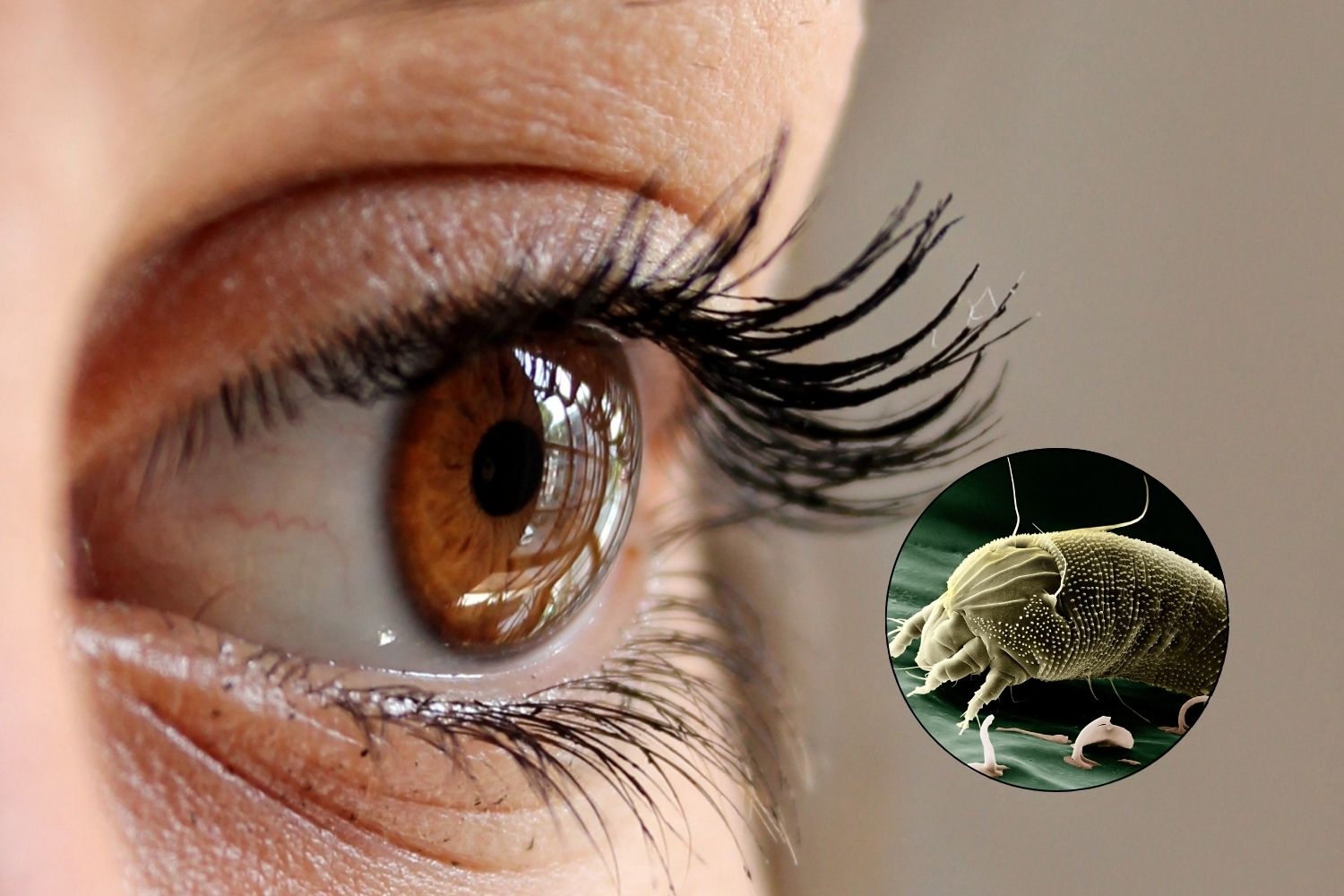Tiny mites living on your eyelashes could be causing your dry eyes. Here's how to spot them—and what you can do to reclaim your comfort.

Millions of people suffer from dry eye syndrome—a condition where the eyes either don’t produce enough tears or the tears evaporate too quickly. Most of us blame the usual suspects: dry air, wind, endless hours in front of screens, contact lenses, antihistamines, decongestants, and yes, even false eyelashes. Sometimes it’s linked to autoimmune disorders, like lupus or rosacea.
But according to several ophthalmologists, there’s another overlooked culprit: tiny creatures living on your face. They’re called eyelash mites, and they may be far more common—and problematic—than you think.
What exactly are eyelash mites?
They’re officially known as Demodex folliculorum, microscopic eight-legged parasites that measure up to 0.016 inches (0.4 millimeters). Invisible to the naked eye, these mites live inside our hair follicles and sebaceous glands, especially around the eyelashes and eyebrows. The unsettling part? They mate on your face while you sleep.
It’s estimated that almost everyone hosts at least a few of these freeloaders. But when they multiply too rapidly, things can get irritating—literally. Excessive populations have been linked to:
- itchy, red eyes
- inflammation of the eyelids (blepharitis)
- dry eyes
- recurrent styes
- eyelash loss
- that classic gritty sensation, like there’s sand in your eyes
How do they get there?
In many cases, you’re born with them or acquire them naturally. Their presence isn’t always a sign of poor hygiene. That said, factors like a weakened immune system, skin disorders, or just bad habits—like sharing makeup or towels—can cause a population boom.
Wearing fake eyelashes too often is also a major trigger, as they create the perfect hiding place for mites and make it harder to clean the eyelids thoroughly.
How do they lead to dry eyes?
The real trouble begins when mites infiltrate the Meibomian glands—tiny oil-producing glands located along the edge of your eyelids. These glands are essential for producing the oily layer of your tear film, which prevents tears from evaporating too quickly.
When the Meibomian glands become clogged or inflamed, they stop functioning properly. The tear film breaks down faster than it should, leading to redness, burning, blurry vision, itching, and light sensitivity. All classic signs of dry eye.
And during summer months, things often get worse due to air conditioning, pollen, and urban pollution.
Can you get rid of them?
Yes, but not with wishful thinking alone. Prescription eye drops can help in more severe cases, but one of the most effective and underrated treatments is daily eyelid cleansing. Using a specialized eye-safe cleanser, ideally one formulated for Demodex, helps eliminate mites, bacteria, and other debris.
Ophthalmologists often recommend combining treatment with warm compresses to unclog the glands and restore tear balance. It’s a bit of a commitment, but it pays off—especially if you’ve been blaming screens or allergies for something deeper (and much smaller).
So, that persistent dryness you’ve been brushing off as too much screen time? The cause might be a lot closer—and creepier—than you thought: a microscopic army of mites, quietly thriving between your lashes.
